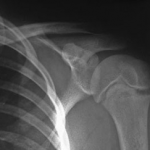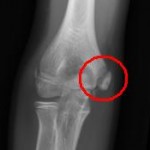Brian Schiff’s Blog
Injury Prevention, Sports Rehab & Performance Training Expert
So, one of my biggest pet peeves as a PT is seeing athletes hurt as a result of poor coaching and training. Overuse injuries provide lots of clients for my practice. While this is good for business, I would really like to help prevent these injuries. I need your help. It all starts with education and a willingness on the part of health and fitness professionals to advocate strongly for our young athletes.
Consider the following scenario: a 14 y/o freshman left-handed pitcher presents for rehab to recover from Little League Shoulder. He was hurt on the second day of his high school’s fall conditioning program. He was being forced to throw in excess of 200 feet. His exact words were, “I was sore after day one, but I felt my shoulder explode on the second day of the program.” Think this is a coincidence? Hardly.
Another player from the same school (a sophomore right hander) is also in my clinic recovering from an avulsion fracture of his medial epicondyle that he too suffered on the second day of the same throwing workout. I emailed the left-handed pitcher’s father with details about throwing biomechanics and how they decline with long distance throwing. I also expressed my concern over the coach’s aggressive throwing program. The father emailed back and said he too disagreed with the throwing program. However, the coach simply told him his son had “not been properly coached” prior to getting to his program. Are you kidding me? Look at the images below to appreciate the type of damage done by overzealous throwing programs.
Coaches need to be more accountable to their training programs and philosophies. Both of these players are missing no less than 3 months of baseball because the coach is clueless about the impact of aggressive long toss and how it may actually be detrimental to his players as opposed to actually improving their throwing technique/performance.
Click here for an article summary in JOSPT related to throwing biomechanics
So, how do we make a positive impact and prevent unnecessary injuries like the ones I have discussed? I feel we need to look at the following strategies:
- Educate parents and coaches through talks and seminars
- Network with high school athletic trainers to ensure they have some feedback/input with respect to preventive training philosophies as well as a direct pipeline to coaches
- Reach the athletes directly through arm care screenings, FMS evals and professionally directed throwing programs
- Team with high profile baseball players or coaches who understand the game at the highest level and will spread the message in a positive and constructive manner
- Participate in CEU course for coaches and present on throwing programs, shoulder strengthening and mobility training
Based on these two cases, I am brainstorming ways I can become more of a “voice” in the baseball community in my area. It is tough to convince pushy parents and misguided coaches that young kids don’t need to throw curveballs or that pitchers should probably not be forced to throw over 200 feet in hopes of increasing arm velocity. But, we need to step up and make a difference or more young kids will be suffering from tendinitis, Little League Elbow/Shoulder, labral tears or other overuse injuries.
Click here for an abstract reference with respect injury risk and innings pitched per year
As a father, coach, educator and physical therapist, my personal mission is to make a difference in the lives of those around me. I know many may simply be unaware that there is a better or safer way. As the emphasis on early specialization continues to grow in our country, now is the time to take action and help stop many of these injuries.

Photo from Bleacher Report
Shoulder surgery is a big concern for any professional pitcher. I am currently rehabbing two MLB pitchers (one from a labral repair and the other from a Tommy John procedure and obviously not JV pictured above). They are doing great so far in their early rehab, but time will tell if they make it back to their pre-injury pitching levels.
Overuse injuries in youth baseball players is always a huge concern I have. In fact, I speculate that early wear and tear may contribute to injuries seen down the road in HS, college or the pro ranks. I know from coaching and observing that more youth coaches need to familiarize themselves with pitch count guidelines and rest/recovery recommendations that Little League baseball now endorses.
As a sports physical therapist who sees 12 year-olds with RC problems and torn UCLs and as a father/coach of a 10 y/o left-handed pitcher, I have a strong passion and vested interest in the welfare of baseball pitchers. While research does not equate increased injury risk with throwing curveballs and sliders to date per se, both of my MLB clients advise against it until athletes turn 14 or 15.
For information on injury prevention and pitching guidelines for youth, check out this website:
http://www.asmi.org/research.php?page=research§ion=positionStatement
Today’s blog post focuses on outcomes following surgery for elite pitchers. The following information was just published in the Jul/Aug 2013 edition of Sports Health by Harris et al. based on literature review based on these outcome measures:
Primary = pitcher’s rate of return to sport (RTS) at the same level prior to injury
Secondary = rates of RTS regardless of level, performance upon RTS and clinical outcome scores
“Elite” was defined as throwing in at least one game in MLB, minor league (A, AA, or AAA) or all collegiate divisions. Six level I-IV studies were included with enrollment from 1976 – 2007, and there were 287 elite male pitchers who underwent shoulder surgery with 99% on the dominant throwing shoulder. Most pitchers (276) were professional with a mean career length of 6.58 years. Post-operative clinical follow-up within these studies was 3.62 years.
Primary diagnoses treated:
- RC tear = 120 (43%)
- Internal impingement = 82 (30%)
- Labral tear = 74 (27%)
Surgical procedures performed:
- Labral repair (157) or labral debridement (99)
- RC repair (29) or debridement (162)
- Thermal capsulorrhaphy (63)
- Subacromial decompression (42)
The statistics reveal more debridement of the labrum (61%) and rotator cuff (85%) versus repair. This is not necessarily surprising given the desire to minimize surgical intervention and loss of motion.
Return to Sport Data
- The overall rate of return to sport was low at 68%.
- Mean time to return to competitive pitching in a game situation was 12 months (range = 9 -17)
- 22% of MLB pitchers never pitched again in MLB
- Only 14% returned to competitive pitching in the same season as labral surgery
- No one returned to competitive pitching in the same season after rotator cuff surgery
- Reynolds et al reported a median of 2 seasons of pitching after debridement of partial thickness cuff tears
- Mazoue and Andrews reported a mean of 0.7 seasons pitching (range 3 innings to 3 seasons) after mini-open RC repair
Performance declined for the 3 seasons prior to surgery and then gradually increased for 3 seasons afterward, but generally did not reach pre-injury levels.
I work with several overhead athletes ranging from swimmers and tennis players to professional baseball pitchers. One consistent issue I see is tightness in the anterior chest wall coupled with poor scapular activation and stability. For that reason, I often turn to snow angel exercises. I wanted to share two variations I have written on before. The first version utilizes a foam roller. The movement is performed throughout a full arc of movement upward and downward.

Top position

Bottom position
Click here for more details on the execution of this exercise
This is an excellent exercise that can be integrated as part of a warm-up/movement prep session as well as used in recovery and the cool-down to address soft tissue tightness in the chest, facilitate proper posture and encourage scapular retraction and depression.
I often use this exercise in combination with pec minor myofascial release and thoracic spine extension mobilization on the roller. It is a staple in all of my rehab and prehab programs with all of my overhead athletes.
The second version involves moving to an upright position and can prove more challenging. The exercise is also designed to promote scapular stability. When done properly, the client will demonstrate proper upward rotation (avoid tipping and winging of the scapula) on the ascent, and then emphasize recruitment of the rhomboids and lower trap to achieve proper downward rotation on the descent.
It can be a very fatiguing activity and somewhat frustrating for clients when starting out. Be sure to cue them accordingly, and let them know it may not be easy to keep full contact. It may also be necessary to utilize soft tissue mobilization for the pecs/lats as well as stretching beforehand to promote a more normal movement pattern.

Top position

Mid position

Bottom position
In this anti-gravity version fatigue becomes more of an issue, so emphasizing quality movement and using less repetitions may be indicated. Do not push through any painful motion.
Click here for more details on the execution of this exercise
I always look for exercises that allow me to actively elongate traditionally short muscles while encouraging proper muscle activation of weak/poorly recruited muscles. This exercise does just that. If you are interested in the impact of pec minor tightness and shoulder impingement, check out the article from JOSPT below:
Many people struggle with faulty posture (forward head and rounded shoulders). Tightness in the pec major or pec minor can negatively affect the body. Often, the throwers I see suffer from tightness in this region. Any overhead athlete can be affected as well as the person who sits and types all day long in the office.
The video below reveals how to use a trigger point ball and block to work on soft tissue tightness. I like the TP ball and baller block from Trigger Point for this exercise sequence.
For more information on this technique and its application, click here to read my online column for PFP magazine. Note: the final “W” motion in the video is not described in the column article, but it is another option that can be included.
For those familiar with my blog, you know I like to post research updates and exercises that prevent injury and maximize performance. In my setting, I get to work with a very active population ranging in ages from 10-50 in most cases, including elite and professional athletes. I am pointing this out simply because I have an opportunity to test and measure unique and challenging exercises every day with fit, athletic clients.
As part of my world, I am often faced with restoring shoulder, core and hip stability. As clients progress through rehab and conditioning, I am always seeking advanced training options that are feasible and functional. One training tool I like to employ, especially in upper body, core and hip training is the BOSU Balance Trainer.
Emphasizing co-contraction and scapulothoracic and glenohumeral stability is essential for optimal shoulder function. But more importantly, addressing kinetic chain function in the shoulder, torso and hips is a must if we are to soundly address energy leaks and reduce injury risk. To that end, I like to incorporate unstable closed kinetic chain training when my athletes are ready. The video below demonstrates two upper body step-up progressions (forward and side-to-side) on the BOSU Balance Trainer that I utilize for higher level clientele.
Upper Body Step-ups
Regression – in place stepping (this can be used to prepare clients for the step-ups)
This regression can also be a very effective training tool especially if the client lacks sufficient strength, endurance and form to execute the full step-up patterns. Pain and form should always guide exercise selection and progression.
Below are two links to my Functionally Fit columns describing the execution and application of these exercises:



